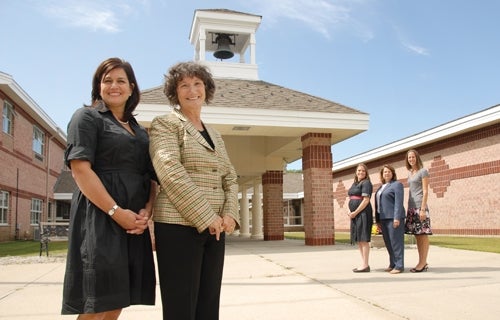When Millville Elementary School faced a budget crisis in 2007, officials saw the numbers and realized they were between a rock and a hard place.
“We looked at the school budget and it was terribly pinched,” said Cynthia Jolicoeur, who is a co-chair of the school council.
Eileen Tetreault, principal of Millville Elementary, agreed.
“When the budget is looked at in a line-item fashion, you realize how severe it is. It is difficult when costs stay the same or go up. If the budget doesn’t increase, that money has to come from somewhere,” said Tetreault.
And for Millville, as it is for many school districts across Massachusetts, the “somewhere” means cuts in instructional supplies, general supplies, and if the deficit is large enough, personnel. The stress of that situation puts pressure on the entire faculty and staff and would not go unnoticed by students.
But Millville struck upon a unique solution to their particular budget crunch that saved cutting back on much-needed school materials and personnel: going green.
Assessment Standards
Jolicoeur brought up the idea of partnering with National Grid to determine if improvements to the school would save on energy costs. Jolicoeur, who runs an energy and environment practice called Marketing Drive, has worked before with National Grid and was familiar with the help the utility can offer its customers.
The school signed off on the idea of bringing in Anita Hagspiel, a National Grid principal analyst/program manager, to do what is known as a “whole building assessment.”
“It approaches buildings in a more holistic way,” said Hagspiel of the assessment that takes a look at lighting and heating systems, among other things, to identify energy inefficiencies.
The assessment showed that Millville Elementary could save $36,000 a year if it spent $140,000 on infrastructure improvements, which included replacing the school’s boiler and lights.
“Saving that much money is hard to even imagine,” said Tetreault. “It is half of a teacher’s salary and then some.”
National Grid picked up $70,000 of the improvement cost and International Power America of Blackstone picked up the remaining half of that expense, said Jolicoeur.
The school’s new lighting system, which was installed in December, operates on a sensor system. There are now modulating burners on the school’s boiler, which allows the boiler to produce only as much heat as is needed, rather than “going from zero to 60,” said Tetreault.
There also are new air exchangers in the gymnasium, which activate based upon the amount of carbon dioxide in the air.
“They used to turn on every two hours, whether they needed to or not, even on weekends,” said Tetreault. “Now, if no one is using the room and the air quality is fine, the (exchangers) won’t bring in cold air that has to be heated.”
Classroom Participation
The energy improvements have not been in place for a full school year, so just how much savings will be realized is not yet known. However, the electric bills for this spring are definitely down, said Tetreault.
“We are very anxious to see those numbers coming in,” she said.
The improvements to the school’s physical plant are just a part of the overall plan.
The second component is that of education. It is safe to say that Millville Elementary students are now quite well-versed in the ways of energy conservation.
“We wanted this to be more than just an upgrade,” said Tetreault. “We asked, ‘How can we make this an educational program?’”
The school council got involved, with two teachers, Christina Ranieri and Catelyn Aguiar, taking the lead on the educational piece, said Tetreault.
Jolicoeur donated her time, creating monthly school newsletters, writing a year’s worth during her 2008 summer vacation. Contests were created for the Power to Save program, prizes given away, activities held.
National Grid supported the school by donating printing help and by manning tables at various events. The logo for the Power to Save program was drawn by Jolicoeur’s daughter, Lily, a Millville Elementary student. Appropriately, it is a picture of a school sitting on top of the Earth, topped by Millville’s well-known school bell.
“The kids just really embraced this,” said Tetreault.
“You have to do this type of project with a team,” said Hagspiel of the effort. “And this was the perfect team to work with.”
National Grid was so impressed by Millville’s Power to Save campaign that they made it a template other elementary schools can use — free of charge — to get their students thinking green.
The education part did not end at the school walls either, said Tetreault.
“We have really reached out to the community,” she said. “It was a lot of work, but it was very rewarding. We are getting the message out to kids and their families.”
What the school has accomplished has not gone unnoticed. It has received several awards for its energy saving program, including this one.
“The recognition is a really nice pat on the head for such a small school in the middle of nowhere,” said Jolicoeur.
Ellen O’Connor is a freelance writer based in Worcester. She can be reached at eokie@charter.net.

